I am trying to transfer power wirelessly through inductive coupling to achieve hydrolysis. When using a transmitter coil, DC powered at 9V, I am able to illuminate an LED connected to the receiver coil.
If I snip the LED off and place the exposed ends in water, I am not able to achieve hydrolysis. When checking the exposed leads with a voltmeter, there is transient voltage between the exposed leads, but this quickly vanishes - maybe it is an artifact.
Is there some way to achieve hydrolysis where the receiver is just a coil with no attached components?
